Friday, October 25, 2013
Six Persimmons
How simple can a painting be? As simple, apparently, as the painting above, which depicts six persimmons (almost) in a row. It is painted on plain paper in black ink, so there is not even any suggestion of colour to stir our senses. It was painted in the 13th-century by the Chinese artist monk Mu Qi, and I have lived with this painting since discovering it in a little book of Chinese art which I bought for myself when I was still at art school – more years ago now than I care to remember!
But if this painting is so simple, why, then, is it widely regarded as one of the greatest works of art ever created? One can point out the virtuosity of the bravura brushwork, in which no single stroke is repeated, and the way in which even the little stalks on the fruit resemble Chinese calligraphy at its shining best. The composition as well is masterful, daring as it does to leave the top half of the painting completely untouched, and offsetting one of the six fruits below the line to add an unexpected dynamism. But all these things have to do with the technique behind the painting. They do not tell us why the painting endures after so many centuries, and what lessons it might contain.
Emma has given her blog the title of Sophia’s Mirror, and her introductory post tells us that Sophia, the embodiment of wisdom, is the creative force behind all things. But Sophia did not exist, as it were, of herself; she was not an equivalent of the omnipotent male creator god of scripture. Behind Sophia was the Unknowable – what Emma in a previous post described as the Dazzling Darkness – and Sophia was herself the first emanation from this Unknowable Mystery. This Mystery is conscious, and consciousness is thought. These thoughts remain as thoughts only. But Sophia with her creative powers can take these thoughts from the Mystery and give them form, make them actual. Whole worlds are created, with their tigers and their tamarind trees, their islands and their oceans and their wheeling flocks of seabirds. Sophia’s mirror reflects all that Sophia has created, all that she has made real from the emerging thoughts of the Mystery.
Look again at those six persimmons. Now view them, not as a whole composition, but as if they were a line of text. Whether you choose to read them from right to left or from left to right does not greatly matter: the result is the same. Those six simple pieces of fruit portray nothing less than the actual act of creation. At the beginning we are in a formless state: a blank emptiness, a ‘no-mind’ bounded by a grey but defining circle. It is the symbol of Zen. Moving along the ‘line of text’ this formless state is no longer a blank void. It is now filled with a tangible ‘something’. But Mu Qi’s brush is not yet fully-charged with ink: these ‘half-manifested’ persimmons are still an intermediate grey. Ah, but the centre persimmon! This one is solid black, as full of ink as the artist’s brush must have been when he painted it. This persimmon is fully-realised, a small piece of fruit manifested in reality. It is not a part of the shadow world to either side of it. It simply ‘is’.
And then the process goes into reverse: from black to grey and again to a blank nothing. Mu Qi (and Sophia!) have taken a raw unformed thought and made it manifest, have caused it to exist. But like life itself this existence is not the end. We have come from the formless, and to the formless state we shall return. How long did this painting take to execute? Sixty seconds? Less? Under the brush of a genius, six persimmons are still enough to portray the entire process of creation, and to chart, as on a graph, the course of every human life.
Painting: Six Persimmons, by Mu Qi (Mu Ch’i), known in China as Fa-Chang. Ink on paper, Song Dynasty, 13th-century.
Subscribe to:
Post Comments (Atom)



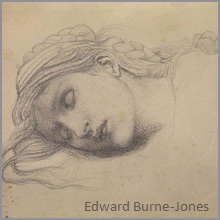

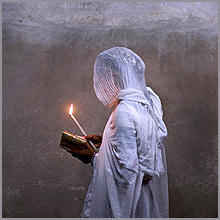
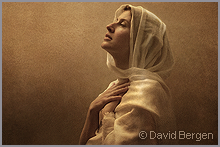
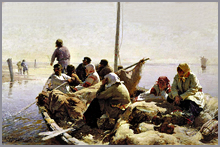
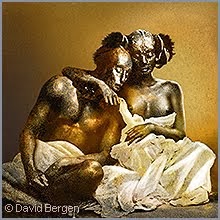


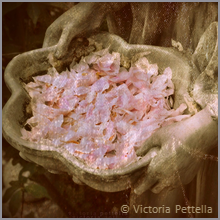
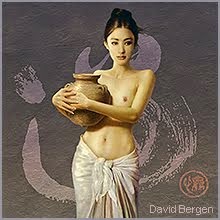
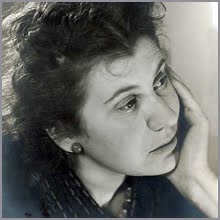
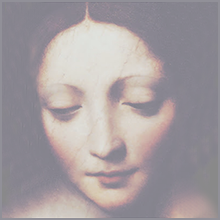
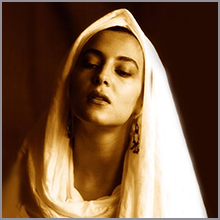
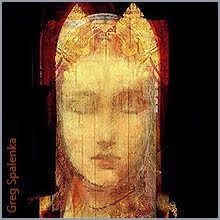
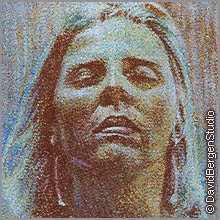











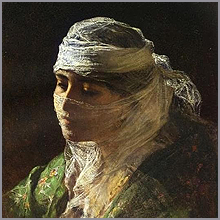
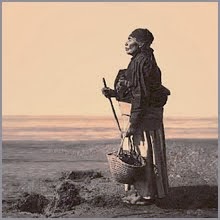

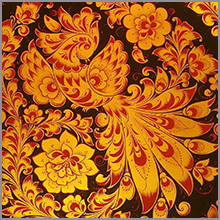

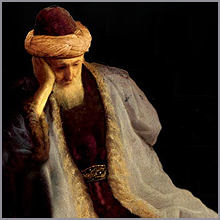
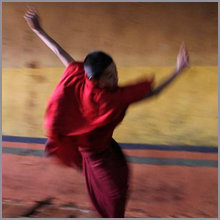




When I view this painting of the six persimmons I am struck by two aspects. The first aspect is the natural simplicity of the lines depicting the varying qualities of the persimmons. This simplicity may appear easy but in fact is quite difficult to master. These brushstrokes are akin to calligraphy. To many practitioners of Chinese calligraphy it is believed that the artist’s inner character and spirit is reflected in every stroke and nuance of the brush. If there are any mental or emotional ripples they are revealed in the brush strokes. This medium is unforgiving as there are no means of erasing or covering up an unwanted stroke. Hence to achieve this level of natural simplicity requires much more than a high degree of technical or even artistic expertise. It requires deep inner stillness. I feel this inner stillness expressed in the painting. David points out the gradation or depth of colour of the persimmons from the “no colour” of the outer persimmons to the grey tones of the middle ones and finally the dark black of the single centre one. He asks us to see the inherent circular movement from the un-manifested formlessness to the manifested dimension of form, and the return movement back to formlessness.“ Those six simple pieces of fruit portray nothing less than the actual act of creation.”
ReplyDeleteEmptiness, or clear space, is the other aspect that this painting brings attention to. Most of the painting is indeed empty space! The emptiness is not the emptiness of desolation, but expresses the limitless and unconditioned essence that is within creation. It is that which cannot be defined or described. It is the underlying background oneness from which all forms of creation arise and eventually dissolve into. Thank you greatly David for sharing this beautiful and timeless work of art and expression of spirit by Mu Qi, and for your truly insightful and perceptive comments.
Thank you for such an erudite comment, Joseph, and I am delighted that you clearly enjoy this painting as much as I do! The phrase you choose - that the medium of pen and ink is 'unforgiving' - is very apt. Mu Qi's absolute confidence of line suggests that he was in a meditative state before executing the work: his own mind was clear and still, and poised for the unconscious to conscious creative movement, which is exactly what his painting portrays.
ReplyDeleteYour further comments about the empty space of the composition also make clear that there are different kinds of 'emptiness'. The space in the painting is not a negative emptiness, but an active state, full of creative potential. This simple quality is what to me connects Mu Qi's masterpiece to the cosmic. to the creative potential of all things, and the 'Sophia's Mirror' from which these things emerge.
After many many viewings of this painting through the years (online) and my own attempts to copy 6 Persimmons, I feel that Mu Qi simply and profoundly expressed the great mystery and wonder of existence.
ReplyDelete